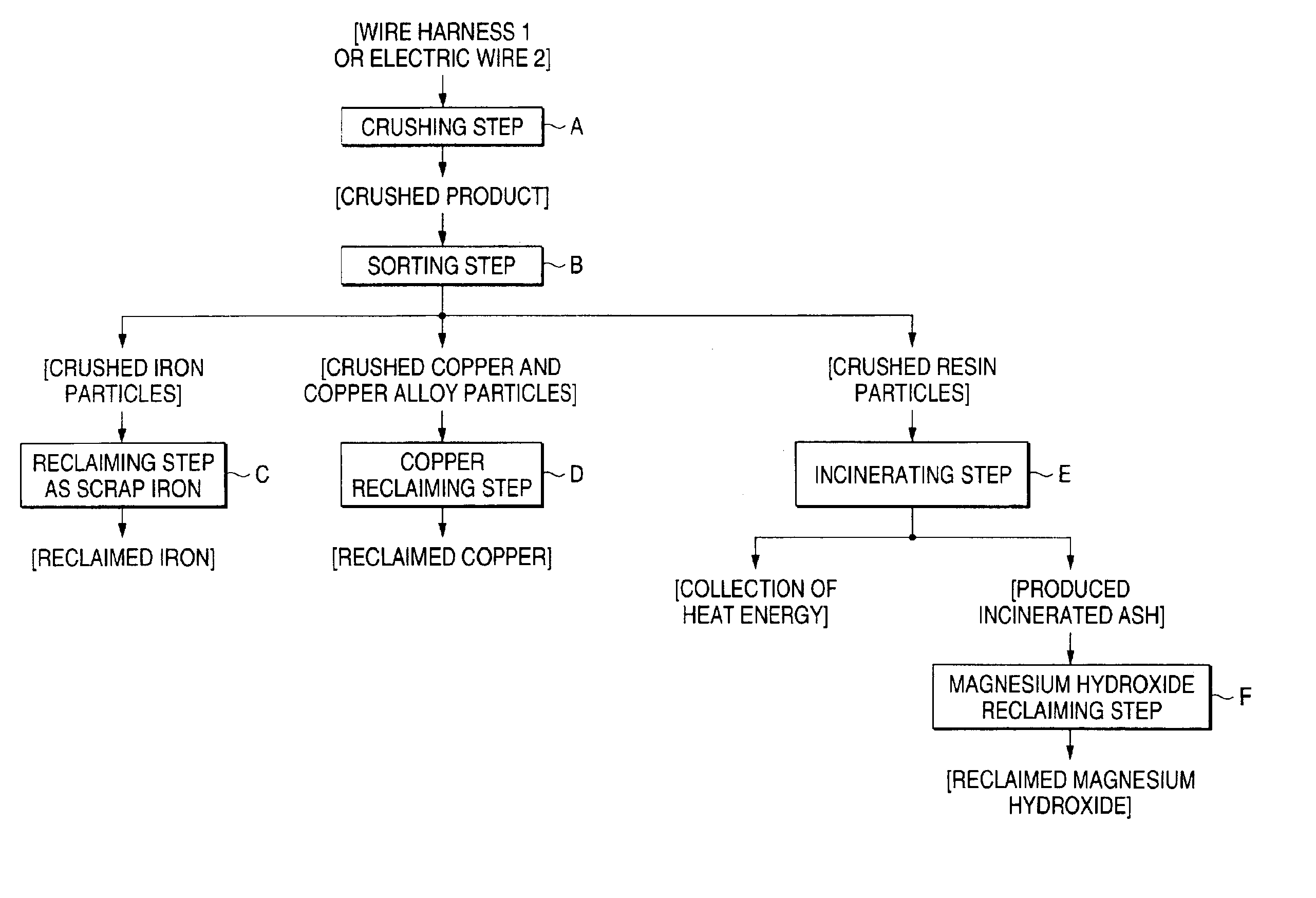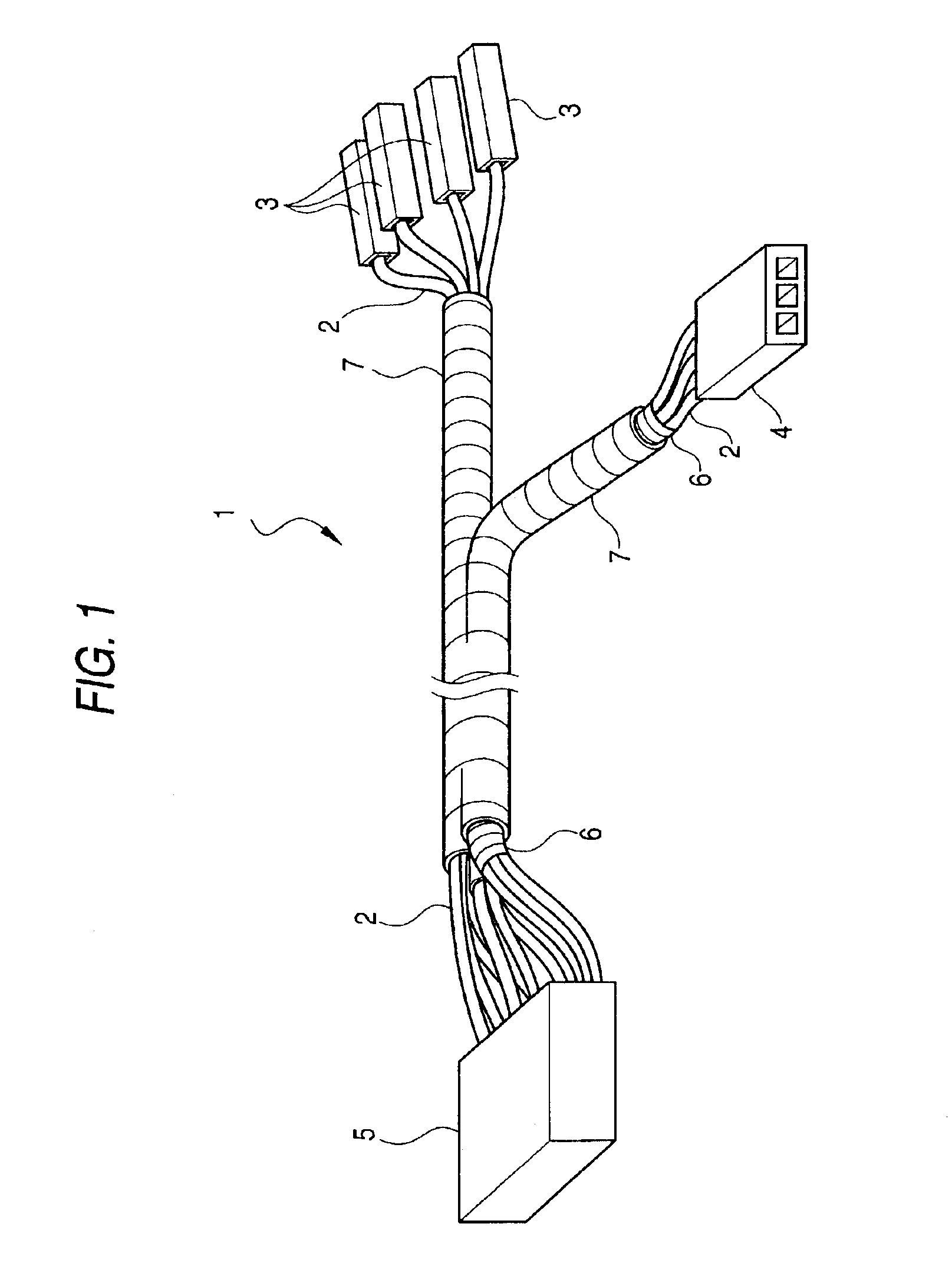Method for recycling waste wire harness
a waste wire harness and wire harness technology, applied in the field of waste wire harness recycling, can solve the problems of apparatus corrosion and no effective method for recycling waste wire harnesses, and achieve the effect of efficient collection and reus
- Summary
- Abstract
- Description
- Claims
- Application Information
AI Technical Summary
Benefits of technology
Problems solved by technology
Method used
Image
Examples
first embodiment
(First Embodiment)
100 parts by weight of polyethylene were mixed with 100 parts by weight of magnesium hydroxide to prepare a resin composition. Electric wires each coated with the resin composition used as a coating material were produced. Then, the electric wires were crushed by a crusher to obtain a crushed product. The crushed product was sorted into crushed iron particles, crushed copper and copper alloy particles and crushed resin particles. The crushed iron particles and the crushed copper and copper alloy particles obtained were used as raw materials for reclaimed ion and reclaimed copper respectively.
On the other hand, the crushed resin particles obtained were incinerated in a high-temperature furnace at 850° C. to obtain incinerated ash. The incinerated ash was brought into contact with water to convert magnesium oxide into magnesium hydroxide. The magnesium hydroxide was collected. The recovery rate of the reclaimed magnesium hydroxide was equal to 78% by weight compared ...
second embodiment
(Second Embodiment)
A wire harness constituted by bound electric wires each containing a coating material of a non-halogen fire retardant resin composition was collected from a vehicle. Accompanied members accessory to the collected wire harness were examined. As a result, it was confirmed that the connectors and the junction boxes were comprised of polyolefin. Then, other accompanied members such as a tube, a binding tape and terminals than the polyolefin members were removed, so that the wire harness including the connectors and the junction boxes connected to the wire harness was put into a crusher. Then, the crushed particles obtained were sorted into crushed iron particles, crushed copper and copper alloy particles and crushed resin particles. The crushed resin particles were used for producing electric wires. The obtained electric wires had practically tolerant fire retardance and mechanical characteristic.
PUM
 Login to View More
Login to View More Abstract
Description
Claims
Application Information
 Login to View More
Login to View More - R&D
- Intellectual Property
- Life Sciences
- Materials
- Tech Scout
- Unparalleled Data Quality
- Higher Quality Content
- 60% Fewer Hallucinations
Browse by: Latest US Patents, China's latest patents, Technical Efficacy Thesaurus, Application Domain, Technology Topic, Popular Technical Reports.
© 2025 PatSnap. All rights reserved.Legal|Privacy policy|Modern Slavery Act Transparency Statement|Sitemap|About US| Contact US: help@patsnap.com



